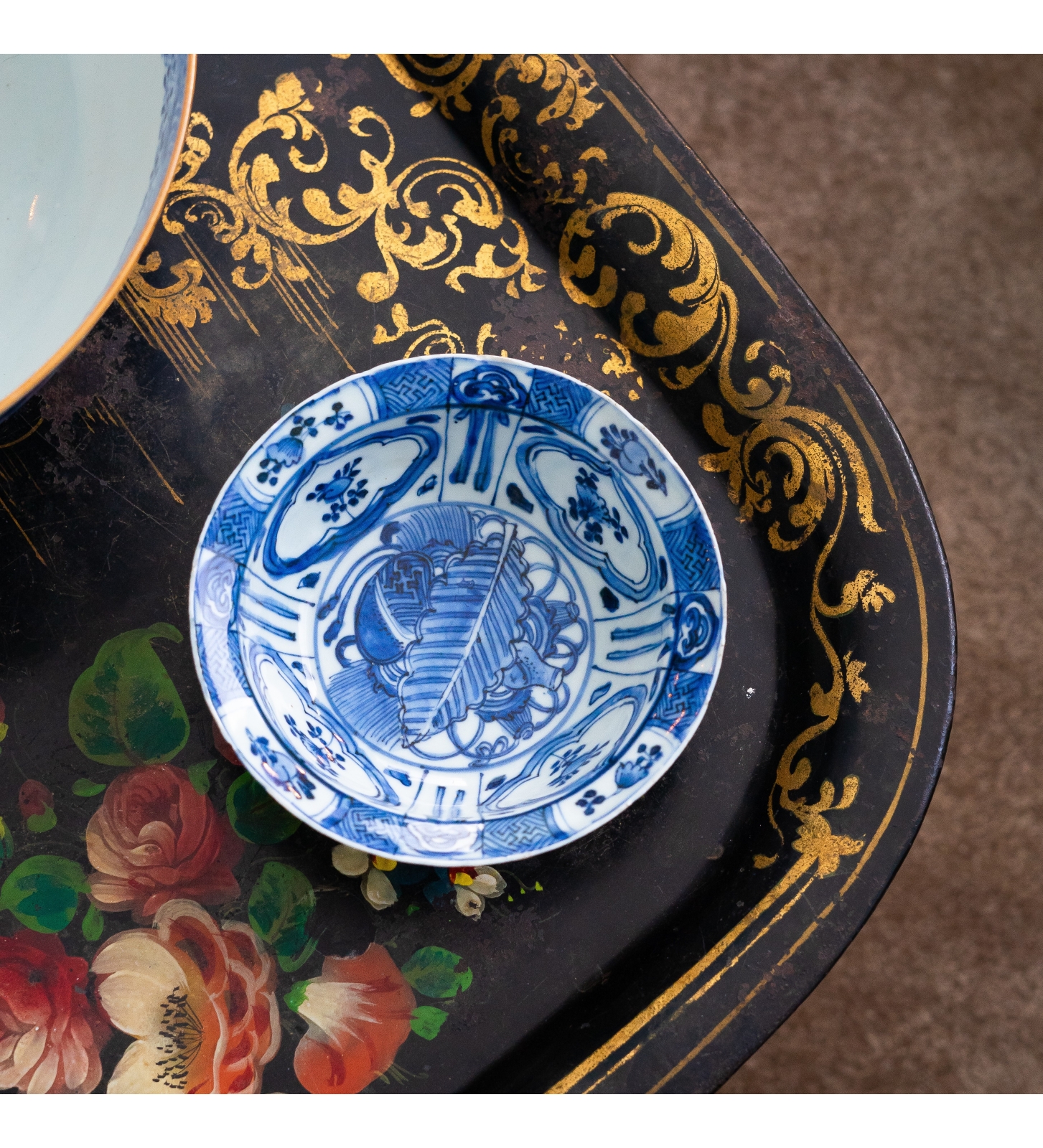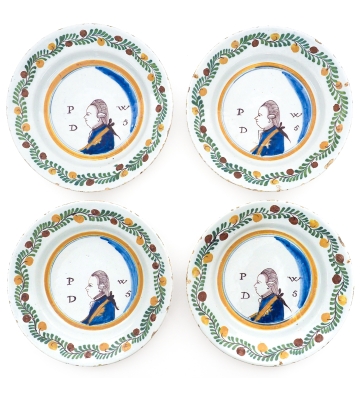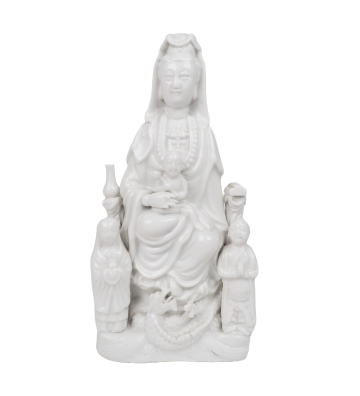This Wanli bowl is also known as ‘klapmuts’ or ‘clapmuts’. This nickname was given by the Dutch East India Company clerks because it looked like a Dutch head gear with an overturn rim made with fur and dated to the 16th century. The rim could be pulled down against the wind and cold. The center is this bowl is decorated with a few of the Chinese symbolical items called ‘Hundred Treasures’. We can see the famous artemisia leaf, scrolls, and a tassel. The cavetto is divided in four panels with flowers in it. In the smaller parts on the border, we can find the ruyi symbol. The border is also filled with the Swastika mystic symbol.
The word ruyi itself comes from the two characters rú (如) and yì (意), and together they literally mean “as you wish.” On the first glaze it looks like the Lingzhi (fungi) symbol, but it has another meaning. The symbol depicts the upper rounded part of the ruyi scepter: a Chinese ceremonial attribute and a sign of authority. According to superstition, the ruyi brings its owner good luck, blessings, and a long life.


























